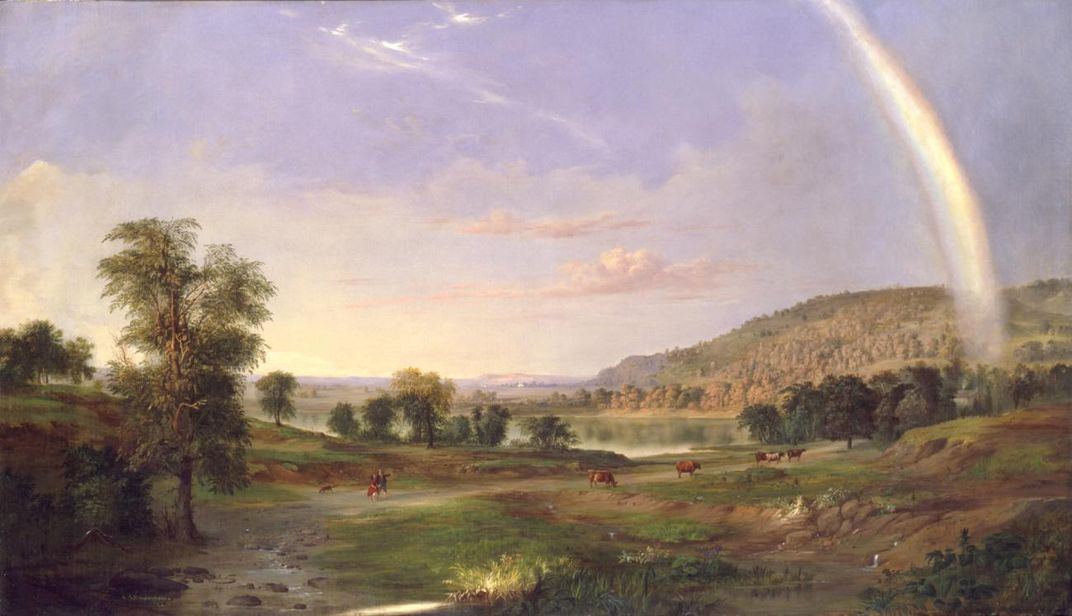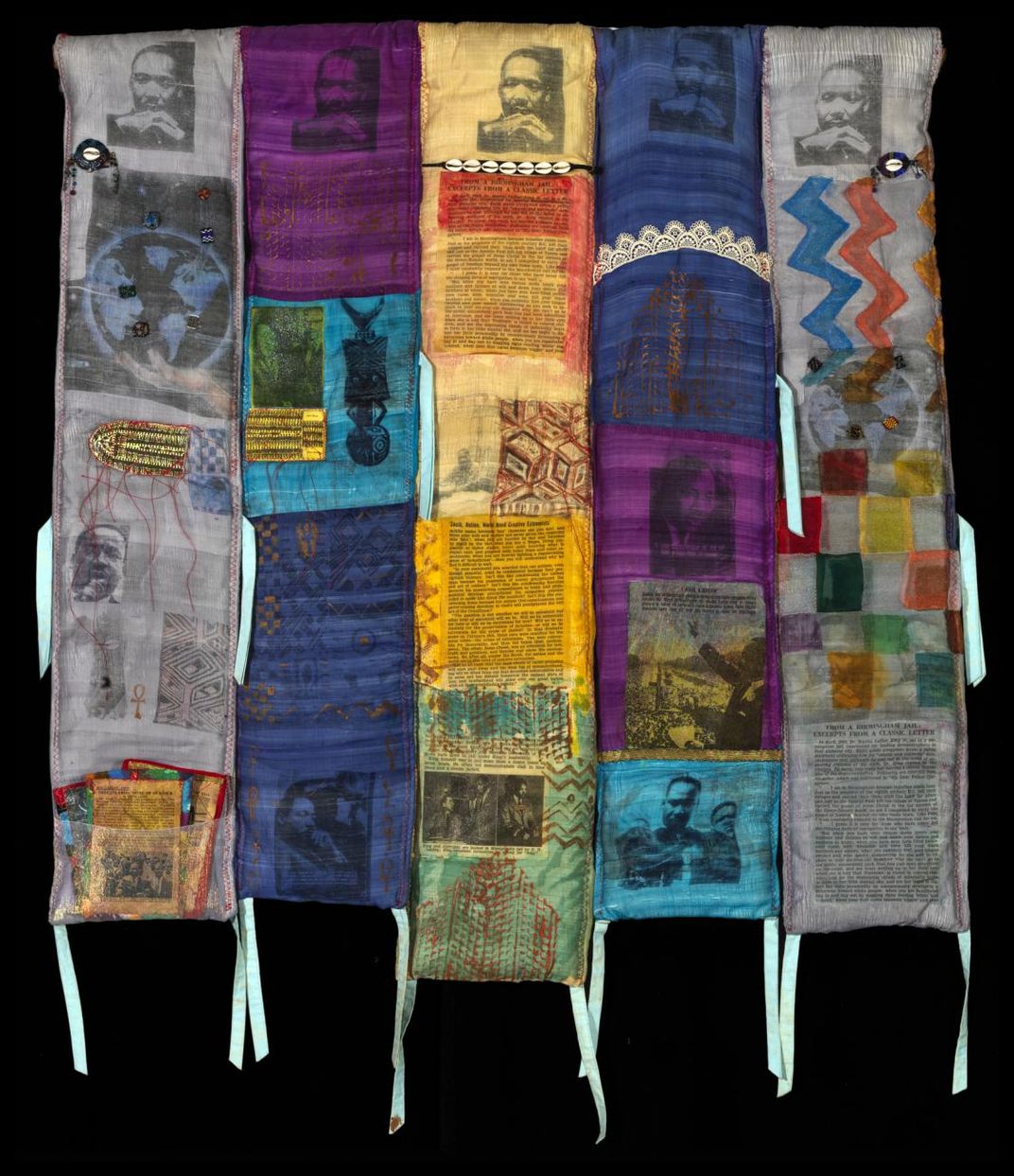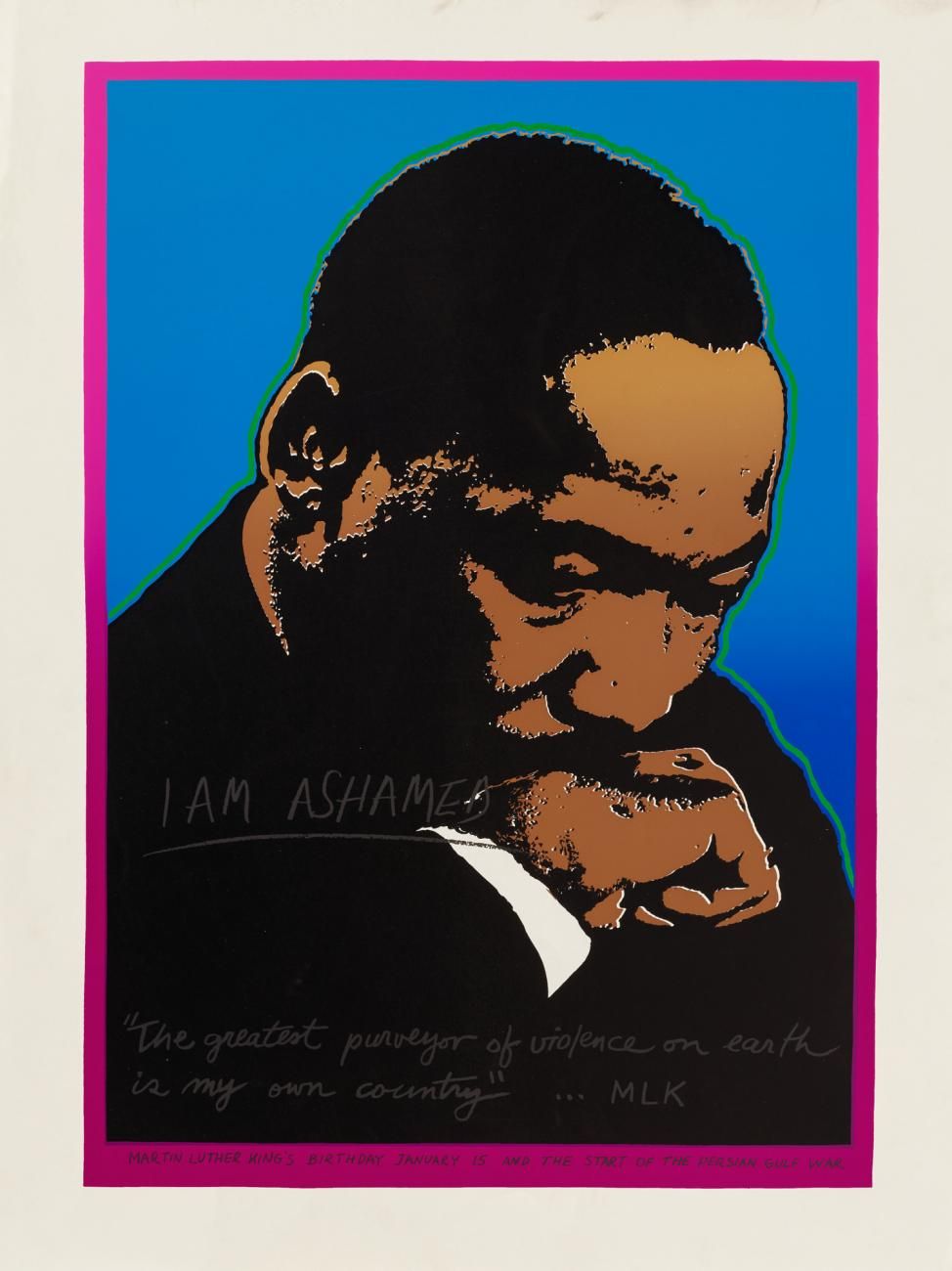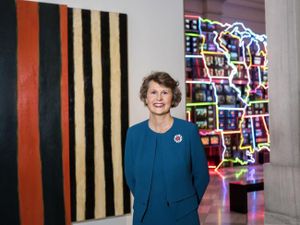SMITHSONIAN AMERICAN ART MUSEUM AND THE RENWICK GALLERY
Celebrating Black History Month, Martin Luther King Jr., and Robert Duncanson
Stephanie Stebich, the Margaret and Terry Stent Director, shares her thoughts about Black History Month, Martin Luther King, Jr. and hope for American democracy.

Landscape with Rainbow (1859) by Robert Seldon Duncanson, a painting with a hopeful message from SAAM’s permanent collection, was selected by First Lady Dr. Jill Biden and Senator Roy Blunt to reflect the theme of the 59th annual Inaugural ceremonies—“Our Determined Democracy: Forging a More Perfect Union.” Though it was intended to hang behind the head table for the welcome luncheon for the new President and Vice President, the event was re-envisioned due to the COVID-19 pandemic. Robert Duncanson was America’s best-known African American painter in the years surrounding the Civil War. Painted on the eve of that fateful moment in our history, the artist still managed to create a pastoral scene with a couple heading towards the end of the rainbow, a sign of hope.

In the ensuing years, that colorful symbol of hope has been taken up by many, including Martin Luther King, Jr., a moral leader whose birthday we celebrated days before the inauguration of President Biden and Vice President Harris. That day was a rebirth of sorts, too, for our country. These events have me thinking about my favorite passage from King’s “Letter from a Birmingham Jail.” “Injustice anywhere is a threat to justice everywhere. We are caught in an inescapable network of mutuality, tied in a single garment of destiny. Whatever affects one directly, affects all indirectly.” I love the visual he creates of the “single garment of destiny.” I visited Birmingham the very week that President Obama was elected in 2008 (I was there to visit the remarkable women quilters of Gee’s Bend Alabama). I read King’s powerful letter at the site of the jail, 6th Avenue South, which was not easy to find as there was no marker then. L'Merchie Frazier’s work in SAAM’s collection, From a Birmingham Jail: MLK seems to me a powerful interpretation of the “single garment of destiny.” Using the format of a traditional African strip quilt, Frazier combines clips from the memorial issue of Jet magazine with symbols and images of Central and West African masks to celebrate King, whom she called, “an activist, peacemaker, and tireless leader of humanity.” This moving artwork will be featured in our upcoming exhibition, Subversive, Skilled, Sublime: Fiber Art by Women, opening at SAAM in 2022.
And that never-ending rainbow is still before us as we celebrate Black History Month to remind us that the work of social justice is never complete. Despite the challenges of systemic racism and COVID-19, we continue our work on behalf of the American people to tell the remarkable story of the American experience, across all media, that helps us understand ourselves and others better through the power of art. We hope to reopen our doors in the not-too-distant future to share our remarkable holdings and dynamic exhibitions.

Until then, I want to also highlight a newly acquired work from our collection, I Am Ashamed, MLK, by René Castro, included in our current exhibition, ¡Printing the Revolution! The Rise and Impact of Chicano Graphics, 1965 to Now. This powerful screenprint unites King’s likeness with a quote from his famous 1967 speech against the US war in Vietnam: “the greatest purveyor of violence on earth is my own country.” Castro added text near the bottom of the print to point out that the start of the Persian Gulf War in 1991 closely coincided with the observance of Martin Luther King, Jr. Day that year.
As we enter a new period in our national lives, a time of renewal and hope, I’d like to leave you with the words of Smithsonian Secretary Lonnie G. Bunch:
This moment is a clarion call. We must commit to working across the lines that divide us to make real the nation so many have long dreamed for, a truly beloved community. As the leader of an institution dedicated to exploring and sharing knowledge for the benefit of humanity, I am more determined than ever to provide our country the resources to help bring the nation together.
Be safe and be well. We are in this together.

